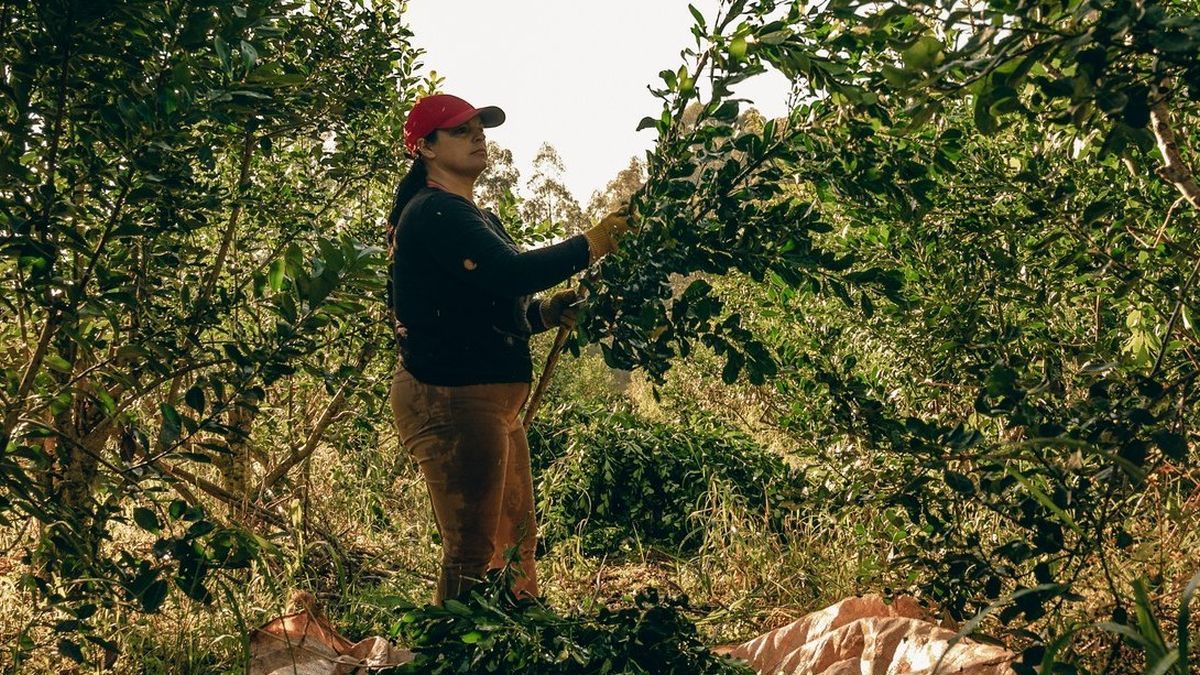According to the latest data published by the National Yerba Mate Institute (INYM), corresponding to November, in the 11 months surveyed last year The volume of yerba mate produced at the mill output reached 238,042,303 kilos for the domestic market, a drop of close to 11% compared to the same period in 2023, when the figure totaled 262,908,940 kilos.
Meanwhile, Exports reached 41,228,288 kilos, exceeding the total for 2023, which counted 39,700,553 kg, including December, whose 2024 survey is not yet public. Currently, the sector has a universe of between 12 thousand and 14 thousand producers, of which 80% are in Misiones.
Crisis in the herbal sector: “This is only going to get worse”
With the scenario configured in this way, the sector denounces that, in September 2023, se used to pay $170 for the herb in the plant, while today that figure was reduced to $80. In this regard, the producer Hector Barbaro He assured: “They are paying us half, but that price did not drop on the shelves. The high prices for yerba mate continued. It means that if they lowered me half and the prices on the shelf remain the same, the transfer of resources and the profits of small producers went to the hypermarkets, distributors and mills”.
In dialogue with ScopeBárbaro said that in 2023, for every ton of green grass they harvested, the workers They earned $35,000 and today they earn $45,000, “after 100% inflation.” For this reason, he explains, many tareferos, especially young people, choose to migrate to Brazil, since the payment for their work in Argentina does not cover the working day. “I estimate that there are more than 10 thousand workers who went there because here, in Misiones, there are no jobs,” graph.
1.jpg
INYM data on yerba mate consumption in the domestic market until November 2024.
Likewise, the leader indicated that In 2023 they charged 0.50 cents per kilogram of green grass in the plant and currently they charge 0.8 and 0.5. Following this line, he denounced the indifference on the part of the national government and warned that they could give away part of the harvest, as happened during the administration of Carlos Menem.
“Deregulating the yerba sector is the worst thing you can do, because 85% are small producers. In addition, you have very concentrated mills: there are three that make almost 80% of the packaged yerba. For each package of grass, where three kilos of green grass go, the settler takes $240 and the worker, $45. We’re talking about $285. The rest of the production chain, the dryer, the mill, the distributor, carry almost 85% of the value,” he detailed.
On the other hand, Bárbaro assured that there are no interlocutors with the administration of Javier Milei: “This is all silent phone, all off. The herbalist producer voted for Milei. This is not going to get better, it is going to get worse and worse. Who gives you ball in Buenos Aires? Nobody. There is no authority that cares. “Karina and Martín Menem came here and they don’t even know what a grass plant is.”
At the same time, the missionary leader recalled that only Argentina, Brazil and Paraguay harvest yerba, the former being the main producer. At the same time, he dismissed the possibility of importing the product and warned that it is a strategy to “scare” the sector, since neither of the two neighboring countries has the capacity to supply the national market.
“Paraguay produces 30 million kilos, they must have six or seven million kilos left over, ten at most, to export. We Argentines consume 25 million kilos per month. If you say ‘hey, the producers are acting crazy, we’re going to buy weed from Paraguay’. What are they going to buy? “It only lasts a week,” he pointed out.
Bárbaro also protested the “inaction” of the INYM and blamed the government of Misiones, which he accused of not offering answers because it was “aligned with Milei”: “80% of the yerba mate is produced in Misiones. The resources that enter the provincial State are many. We proposed the creation of a provincial yerba mate institute so that we missionaries can set the prices of the yerba mate.”
Yerba Mate missions.jpg

In the herbal sector they denounce that there is no dialogue with the Government of Javier Milei.
Added to this scenario was the deregulation of the packaging of yerba mate origin, which by law had to be in Misiones or Corrientes. The interviewee explained that now “any guy goes and buys 1,000 kilos of weed, takes it to Salta, mixes it with the yuyito he wants and transforms it into 40 thousand kilos.”
Finally, the missionary considered that he “does not see any hope” for the future and that “this is only going to get worse.” As a counterpart, he considered the possibility of producers cutting half of the grass: “Let them come to my house to offer me the price. Regulate the market a little but don’t expect them to regulate the price downwards, but rather that you sell what you can and keep the weed in your plant.”
“To produce a kilo of grass, you have to remove the mudita, wait five years for the first cut, the tarefereros have to come – on rainy days, on frost days -… it is an artisanal work, all manual labor. No It can be worth less than a Coca Cola. In the family basket, how long does a kilo of weed last? A lot,” Bárbaro concluded.
Protest of the yerbatero sector in Misiones
As he told Scopenearly 200 yerbate producers from Misiones decided to paralyze the summer harvest, known as “zafriña”, for four months (from December 2 to March 31, 2025), demanding that the green leaf be priced at $450 pesos per kilo, as well as regularizing the situation of the INYM, deregulated by mega DNU 70/23.
After voting on the measure last November, the Misiones Agrarian Movement (MAM) defined the panorama as “critical and unsustainable.” “The settlers cannot even cover the costs of production. And it is especially felt among the tareferos, the last link in the chain,” they remarked from the MAM.
Source: Ambito
I am a 24-year-old writer and journalist who has been working in the news industry for the past two years. I write primarily about market news, so if you’re looking for insights into what’s going on in the stock market or economic indicators, you’ve come to the right place. I also dabble in writing articles on lifestyle trends and pop culture news.




